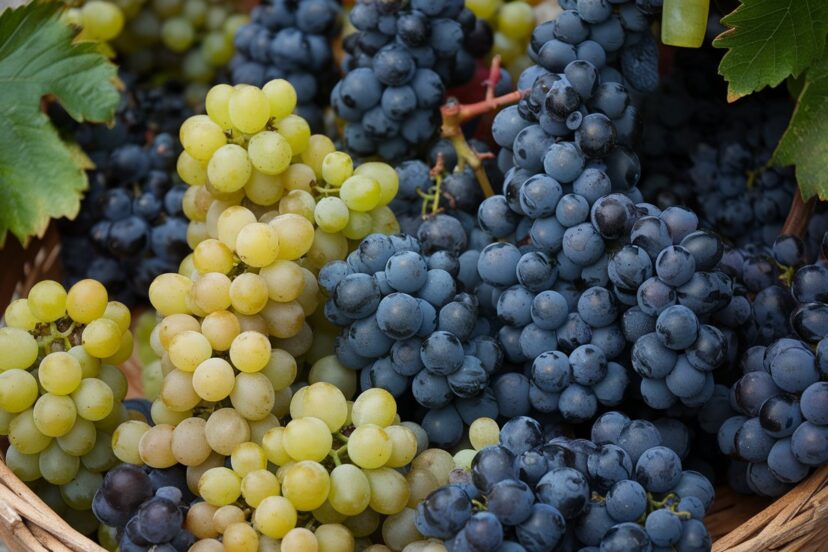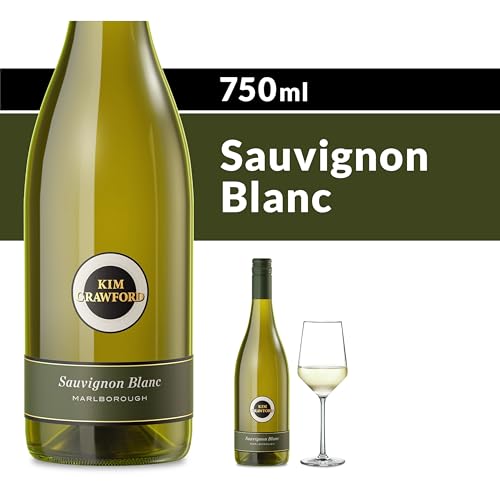Different Types of Wine Grapes Explained
Post Disclaimer
*We may earn a commission for purchases made using our links. Please see our disclosure to learn more.
Wine is more than just a beverage, it’s a living, breathing testament to the intricate relationship between nature, culture, and human craftsmanship. As someone who has spent years traversing vineyards from the rolling hills of Tuscany to the sun-drenched valleys of California, I’ve come to understand that every bottle of wine tells a unique story. At the heart of this narrative are the grapes, those tiny, complex fruits that transform from simple clusters hanging on vines to the liquid poetry we know as wine.
In this journey, we’ll dive deep into the fascinating world of wine grapes, uncovering the secrets behind their flavors, the nuances of their origins, and the magic that happens between the vineyard and the glass. Whether you’re a casual wine enthusiast or a budding sommelier, prepare to expand your understanding of these remarkable fruits that have captivated human imagination for thousands of years.
Key Takeaways
- Wine grapes represent an incredible biodiversity with over 10,000 known varieties
- Each grape variety carries a unique genetic story and flavor profile
- Climate, soil, and winemaking techniques are crucial in grape development
- Understanding grape varieties enhances wine appreciation and selection
- Global wine production continues to evolve with emerging and heritage grape varieties
The Global Landscape of Wine Grapes
The world of wine grapes is incredibly vast and complex, with a rich history spanning thousands of years. While many wine enthusiasts are familiar with well-known varieties like Cabernet Sauvignon, Chardonnay, and Pinot Noir, the reality is that there are over 10,000 different grape varieties cultivated globally. These varieties have evolved through centuries of human cultivation, environmental adaptation, and crossbreeding to suit different climates and winemaking styles.
Wine grapes can be broadly categorized into two main types: Vitis vinifera and hybrid varieties.
- Vitis vinifera: This species originates from Europe and the Mediterranean region and is responsible for the world’s most prestigious wines. Varieties like Cabernet Sauvignon, Merlot, Riesling, and Syrah belong to this category, and they thrive in classic wine-producing regions such as France, Italy, and Spain.
- Hybrid Varieties: These grapes result from crossing different species, often including North American or Asian grapes. Hybrids are typically bred for disease resistance, cold hardiness, and adaptability to challenging climates. Examples include Vidal Blanc (used for ice wines) and Chambourcin (a red hybrid found in the U.S. and Australia).
The diversity of wine grapes ensures a vast range of flavors, aromas, and wine styles, allowing for unique expressions based on terroir, climate, and winemaking techniques.
Regional Grape Specialties
Throughout history, different wine regions have become famous for cultivating specific grape varieties, often due to climate, soil conditions, and local traditions. These signature grapes define regional wine identities and influence global wine markets.
France: The Benchmark of Fine Wines
- Bordeaux – Known for iconic Cabernet Sauvignon and Merlot blends, creating structured, age-worthy red wines.
- Burgundy – Home to world-class Pinot Noir (elegant reds) and Chardonnay (rich, mineral-driven whites).
- Champagne – The birthplace of sparkling wine, featuring Chardonnay, Pinot Noir, and Pinot Meunier in traditional blends.
Italy: A Haven of Indigenous Grapes
- Tuscany – Famous for Sangiovese, the backbone of Chianti and Brunello di Montalcino.
- Piedmont – Produces bold Nebbiolo (Barolo, Barbaresco) and fresh Barbera wines.
- Sicily – Known for Nero d’Avola (a deep, fruity red) and Grillo (a crisp white variety).
Spain: Old-World Tradition Meets Innovation
- Rioja – Dominated by Tempranillo, producing structured reds with aging potential.
- Galicia – The home of Albariño, a vibrant white wine known for its fresh acidity.
- Priorat – Features powerful Garnacha (Grenache) and Carignan blends.
New World Wine Regions and Their Signature Grapes
- United States (California) – Cabernet Sauvignon (Napa Valley), Zinfandel (Sonoma), and Chardonnay (Central Coast).
- Argentina – Famous for Malbec, known for its bold, dark fruit flavors and velvety texture.
- Chile – A leader in Carménère, a lost Bordeaux grape that thrives in the country’s unique climate.
- New Zealand – Known globally for its zesty, aromatic Sauvignon Blanc from Marlborough.
- Australia – Home to Shiraz (Syrah), particularly in Barossa Valley, and Riesling from Eden Valley.
Each of these regions showcases the versatility of wine grapes, reflecting their environment and winemaking traditions. As wine lovers continue to explore different varieties, lesser-known grapes and emerging wine regions are gaining international attention, bringing exciting new flavors to the market.
Detailed Exploration of Grape Varieties
Wine grapes are the backbone of winemaking, each variety offering unique characteristics that define a wine’s flavor, aroma, and aging potential. While classic varieties like Cabernet Sauvignon and Pinot Noir dominate the global wine scene, emerging and lesser-known grapes are gaining attention for their distinctive qualities and regional significance.
Red Wine Grape Varieties: A Deep Dive
Cabernet Sauvignon: The King of Red Grapes
Josh Cellars Cabernet Sauvignon is a full-bodied and elegant red wine that delivers a rich and flavorful experience with every sip. Crafted in California, this Cabernet Sauvignon is known for its deep flavors of blackberry, toasted hazelnut, and warm cinnamon, complemented by enticing aromas of dark fruits, clove, and subtle oak. With a smooth yet structured finish, this wine pairs beautifully with well-seasoned meats, hearty dishes, or indulgent chocolate desserts. Whether you're celebrating a special occasion or simply unwinding after a long day, Josh Cellars Cabernet Sauvignon offers a sophisticated and satisfying choice.
- Bold Flavor Profile: Rich notes of blackberry, toasted hazelnut, and cinnamon create a well-rounded and complex taste.
- Versatile Pairing: Complements a variety of dishes, from grilled steaks to decadent chocolate desserts.
- Affordable Quality: Offers a premium wine experience at a budget-friendly price point.
- Vintage Variability: The specific characteristics may vary depending on the year of production.
- Moderate Tannins: May be slightly too dry for those who prefer a fruitier, softer red wine.
- Alcohol Content: At 13.5% ABV, it may be stronger than some casual wine drinkers prefer.
Cabernet Sauvignon is one of the most widely planted and celebrated red grape varieties in the world. Despite its global dominance, it is a relatively young grape, believed to have originated as a natural cross between Cabernet Franc and Sauvignon Blanc in the 17th century. This genetic background gives it a unique balance of structure, acidity, and aromatic intensity.
Key Characteristics:
- Flavor Profile: Intense black fruit flavors such as blackcurrant, blackberry, and black cherry.
- Tannin Structure: High tannins contribute to firm structure and excellent aging potential.
- Aging & Complexity: Over time, it develops notes of tobacco, cedar, leather, and earthiness.
- Regional Prominence: Grown extensively in Bordeaux (France), Napa Valley (USA), Chile, and Australia’s Coonawarra region.
Cabernet Sauvignon thrives in warm climates and is often blended with Merlot, Cabernet Franc, Malbec, and Petit Verdot to create structured and balanced wines, such as those found in Bordeaux’s Left Bank.
Pinot Noir: The Temperamental Artist
Meomi Pinot Noir is a rich, full-bodied red wine crafted from a blend of grapes sourced from three renowned California wine regions, Monterey, Santa Barbara, and Sonoma. Aged for six months in 100% French oak, this wine offers a velvety texture with balanced acidity and soft tannins. The deep, layered flavors of blackberry, blueberry, wild berry, cherry, and raspberry make for a bold yet smooth drinking experience. Perfect for pairing with a variety of dishes, Meomi Pinot Noir enhances everything from tomato-based pasta to grilled meats.
- Bold Flavor: Rich, fruit-forward notes of blackberry, cherry, and raspberry.
- Smooth Texture: Silky tannins and balanced acidity for a refined finish.
- Versatile Pairing: Complements pasta, pizza, grilled meats, and more.
- Higher Price Point: More expensive than some other Pinot Noirs.
- Slightly Heavy: Fuller-bodied than traditional Pinot Noir styles.
- Oak Influence: French oak aging adds depth but may not suit all palates.
Often called the “heartbreak grape”, Pinot Noir is one of the most delicate and challenging varieties to cultivate. Its thin skin, tight clusters, and susceptibility to disease make it highly dependent on climate and soil conditions. This sensitivity also allows it to express terroir more than almost any other grape, resulting in highly varied styles.
Key Characteristics:
- Color & Body: Lighter in color and body compared to other red wines, with silky tannins.
- Aromatic Complexity: Earthy and floral notes alongside vibrant red fruit flavors.
- Flavor Profile: Cherry, raspberry, cranberry, with hints of mushroom, spice, and forest floor as it ages.
- Regional Prominence: Grown in Burgundy (France), Oregon (USA), New Zealand (Central Otago, Marlborough), and California’s Sonoma Coast.
Pinot Noir’s delicate nature and bright acidity make it an excellent food wine, pairing beautifully with duck, salmon, mushroom-based dishes, and soft cheeses.
Emerging Red Varieties: Hidden Gems of the Wine World
While Cabernet Sauvignon and Pinot Noir are global superstars, several lesser-known red grape varieties are gaining recognition for their unique flavors and regional significance.
Nerello Mascalese (Sicily, Italy)
- Often compared to Pinot Noir for its elegance and bright acidity.
- Grown primarily on the volcanic slopes of Mount Etna, giving it a distinct mineral-driven profile.
- Flavors of red berries, dried herbs, and a smoky, earthy undertone.
Trousseau (Jura, France)
- A light-bodied red variety with an aromatic and spicy profile.
- Grown in France’s Jura region but also found in Spain and California.
- Notes of strawberries, red currants, and white pepper with a fresh acidity.
Xinomavro (Greece)
- Greece’s answer to Nebbiolo, known for its firm tannins and aging potential.
- Produces bold, structured wines with flavors of sour cherry, sun-dried tomato, and olive.
- Mainly grown in Naoussa and Amyndeon, thriving in Greece’s mountainous terrain.
Touriga Nacional (Portugal)
- The backbone of Port wines but also produces exceptional dry reds.
- Deep in color with bold tannins and intense dark fruit flavors like blueberry, plum, and blackcurrant.
- Aromatic complexity with floral hints of violet and subtle spice notes.
- Prominent in the Douro Valley and Dão region of Portugal.
Looking Ahead: The Future of Red Wine Grapes
As climate change affects vineyard conditions, winemakers are increasingly experimenting with heat-resistant and drought-tolerant varieties. Regions once considered too cool for certain grapes are now producing outstanding wines, while traditional wine-growing areas are embracing hybrids and indigenous varieties to maintain sustainability.
From the volcanic soils of Sicily to the high-altitude vineyards of Argentina, red wine grapes continue to evolve, offering wine lovers new flavors, textures, and experiences to explore. Whether you’re a fan of bold, tannic reds or prefer light, aromatic styles, there’s a world of red wine grapes waiting to be discovered.
White Wine Grape Varieties: Exploring Complexity
White wine grapes bring a diverse range of flavors, aromas, and styles, from crisp and mineral-driven to rich and full-bodied. Whether grown in cool, maritime climates or sun-drenched vineyards, white grape varieties showcase their terroir in distinct ways. Some of the world’s most popular white grapes, like Chardonnay and Sauvignon Blanc, have adapted to different winemaking techniques, allowing for a broad spectrum of wine styles.
Chardonnay: The Chameleon Grape
Three Wishes Chardonnay is a budget-friendly yet delightful white wine sourced from American vineyards. This crisp and fruit-forward Chardonnay features bright aromas of apple, pineapple, and melon, leading to a smooth finish with subtle buttery notes. Its refreshing character makes it an easy-drinking option for casual gatherings or everyday enjoyment. Perfectly paired with herbed pork loin or creamy pasta dishes, this Chardonnay offers great value without compromising on flavor.
- Affordable Price: A budget-friendly Chardonnay that delivers solid quality.
- Easy-Drinking & Refreshing: Light fruit flavors with a smooth, slightly buttery finish.
- Versatile Pairing Options: Complements creamy pasta dishes and herbed meats well.
- Simple Flavor Profile: Lacks the complexity of higher-end Chardonnays.
- Mild Buttery Finish: May not be rich enough for those who prefer full-bodied, oak-aged Chardonnays.
- Limited Aging Potential: Best enjoyed young, as it doesn’t develop much over time.
Chardonnay is often referred to as the most versatile white grape because of its ability to adapt to different climates and winemaking techniques. From the crisp, mineral-driven wines of Chablis to the bold, buttery Chardonnays of California, this grape can be crafted into a wide variety of styles.
Key Characteristics:
- Versatile expression: Chardonnay’s neutral character allows winemakers to shape its style through aging methods, fermentation, and oak influence.
- Cool-climate Chardonnay: Produces wines with high acidity, citrus flavors, and minerality, often found in Chablis (France) and Tasmania (Australia).
- Warm-climate Chardonnay: Leads to riper fruit flavors like tropical pineapple and peach, with a rounder mouthfeel—common in California, South Australia, and South Africa.
- Oaked vs. Unoaked:
- Oaked Chardonnay: Aged in barrels to develop flavors of vanilla, butter, caramel, and toasted nuts. Prominent in Burgundy (Meursault), Napa Valley, and Margaret River.
- Unoaked Chardonnay: Fermented in stainless steel, highlighting its natural apple, citrus, and floral notes, common in Chablis and parts of New Zealand.
Famous Regions for Chardonnay:
- Burgundy, France: The birthplace of Chardonnay, producing some of the world’s finest examples, from the steely Chablis to the creamy, complex Meursault and Puligny-Montrachet.
- California, USA: Napa Valley and Sonoma County are known for their full-bodied, oak-aged Chardonnays with rich textures.
- Australia: Yarra Valley, Adelaide Hills, and Margaret River produce cool-climate Chardonnay with elegant minerality and refined oak integration.
Food Pairings:
- Unoaked Chardonnay: Seafood, sushi, oysters, goat cheese.
- Oaked Chardonnay: Roast chicken, creamy pasta, lobster, grilled corn.
Sauvignon Blanc: Vibrant and Distinctive
Kim Crawford Sauvignon Blanc is a fresh and lively white wine that captures the essence of New Zealand’s renowned Marlborough region. With its crisp acidity and bright aromas of citrus, tropical fruit, and crushed herbs, this Sauvignon Blanc delivers an invigorating and flavorful experience. The palate is bursting with juicy passion fruit, ripe melon, and stone fruit, leading to a well-balanced, weighted finish. Conveniently packaged with an easy-to-open screw top, this wine is perfect for both casual sipping and elegant pairings with seafood, salads, or light pasta dishes.
- Crisp & Refreshing: Bright acidity and vibrant fruit flavors make it a lively choice.
- Convenient Packaging: Screw top design ensures easy opening and portability.
- Versatile Food Pairing: Pairs well with seafood, salads, and fresh appetizers.
- High Acidity: Might be too sharp for those who prefer a softer white wine.
- Limited Complexity: Lacks the depth of some aged or oak-influenced white wines.
- Vintage Variation: Flavors may slightly differ depending on the year.
Sauvignon Blanc is known for its high acidity, crisp texture, and vibrant aromatics. Unlike Chardonnay, which is shaped by winemaking, Sauvignon Blanc maintains a distinctive and recognizable profile across regions.
Key Characteristics:
- Bright acidity: Sauvignon Blanc is known for its zesty, refreshing quality.
- Green and citrus notes: Flavors range from grassy and herbaceous (like bell pepper, gooseberry, and jalapeño) to citrus and tropical fruit (lime, passion fruit, and grapefruit).
- Mineral-driven in cool climates: Produces wines with flint, wet stone, and saline qualities, especially in Loire Valley, France.
- Tropical and fruit-forward in warm climates: Regions like California and Chile bring out riper, fruitier styles.
Famous Regions for Sauvignon Blanc:
- Loire Valley, France: Home to the world-renowned Sancerre and Pouilly-Fumé, offering elegant, mineral-rich Sauvignon Blancs with flinty, citrus-driven character.
- Marlborough, New Zealand: Produces intensely aromatic wines with bold tropical flavors, zesty acidity, and grassy undertones, a style that has gained international fame.
- California, USA: Known as Fumé Blanc in some regions, often aged in oak to create a softer, rounder profile.
- South Africa and Chile: Producing expressive, value-driven Sauvignon Blancs with excellent acidity and citrus focus.
Food Pairings:
- Classic pairing: Goat cheese and Sauvignon Blanc (a staple in the Loire Valley).
- Fresh seafood, grilled vegetables, sushi, Thai cuisine.
- Asparagus, citrus salads, herbed chicken.
Emerging White Grape Varieties: Hidden Treasures
While Chardonnay and Sauvignon Blanc dominate the market, several lesser-known white grape varieties are gaining recognition for their unique styles:
Albariño (Spain & Portugal)
- Found mainly in Rías Baixas (Spain) and Vinho Verde (Portugal).
- High acidity with citrus, peach, and saline minerality.
- Perfect with seafood and light Mediterranean dishes.
Grüner Veltliner (Austria)
- Known for its white pepper, green apple, and citrus notes.
- Crisp acidity with an herbal, slightly spicy kick.
- Pairs well with Asian cuisine, schnitzel, and fresh salads.
Chenin Blanc (France & South Africa)
- Produced in a variety of styles, from dry and zesty to lusciously sweet.
- Key regions: Loire Valley (Vouvray) and South Africa.
- Flavors of honey, pear, quince, and floral notes.
Vermentino (Italy & France)
- Thrives in Sardinia (Italy) and Provence (France).
- Aromatic with notes of lemon zest, green apple, and Mediterranean herbs.
- Pairs beautifully with grilled fish, shellfish, and pesto dishes.
Looking Ahead: The Future of White Wine Grapes
The demand for high-acid, fresh, and mineral-driven white wines continues to rise, with regions adapting to climate change by exploring heat-resistant varieties. Winemakers are also focusing on sustainable farming and natural winemaking techniques to enhance the purity of white grape expressions.
From the rich, buttery depths of California Chardonnay to the crisp, tropical zest of New Zealand Sauvignon Blanc, white wine grapes offer an exciting and diverse tasting experience. Whether you’re a fan of bold and structured or light and refreshing, the world of white wines has something for everyone.
The Science Behind Grape Growing
The cultivation of wine grapes is a delicate balance of environmental factors, climate influences, and sustainable practices. From the concept of terroir to the impact of climate zones and the future of sustainable viticulture, every element plays a role in shaping the final characteristics of the wine.
Terroir: More Than Just Soil
The French term terroir refers to the unique environmental conditions that influence grape growing. While soil composition is a major factor, terroir is a combination of multiple elements, including:
Key Components of Terroir:
- Soil Composition
- Microclimate
- Includes temperature variations, humidity, and local weather patterns.
- Coastal vineyards benefit from cooling ocean breezes, while inland vineyards may experience hotter daytime temperatures but cooler nights that help preserve acidity.
- Altitude & Topography
- Higher altitude vineyards, like those in Argentina’s Mendoza region, produce grapes with thicker skins and higher acidity due to cooler nighttime temperatures.
- Hillside vineyards receive better sun exposure and drainage, leading to more concentrated flavors.
- Sunlight Exposure
- North vs. south-facing slopes impact ripening speed and flavor development.
- Warmer, sunnier regions like Tuscany produce riper, fruit-forward wines, while cooler regions like Burgundy yield more restrained, structured wines.
- Drainage & Water Availability
- Well-draining soils (gravel, sand) help prevent waterlogging and concentrated flavors.
- Vineyards in dry climates (e.g., Spain, South Australia) rely on deep-rooted vines to access underground water sources.
How Terroir Influences Wine Style:
- Bordeaux’s gravelly soils help create powerful, structured red wines with firm tannins.
- Burgundy’s limestone-rich soils produce elegant, high-acid Chardonnays and Pinot Noirs.
- Napa Valley’s diverse microclimates allow for a range of rich, full-bodied wines.
Climate Zones and Grape Development
Climate plays a crucial role in grape ripening, sugar accumulation, and acidity retention. Different regions produce vastly different grape profiles depending on temperature and growing season length.
Three Main Climate Zones for Grape Growing
- Cool Climate Regions
- Examples: Champagne, Mosel (Germany), Burgundy, New Zealand
- Characteristics:
- Higher acidity, lower sugar levels → produces crisp, fresh wines
- Flavors lean towards citrus, green apple, and herbal notes
- Red wines (e.g., Pinot Noir, Gamay) tend to be lighter-bodied, with bright acidity
- Moderate Climate Regions
- Examples: Bordeaux, Tuscany, Oregon, Rioja
- Characteristics:
- Balanced sugar and acidity → creates well-rounded wines
- Red wines (e.g., Merlot, Tempranillo, Sangiovese) develop ripe fruit with medium tannins
- Whites (e.g., Chardonnay, Chenin Blanc) have complexity with mineral undertones
- Warm Climate Regions
- Examples: California (Napa, Sonoma), South Australia, South Africa, Southern Spain
- Characteristics:
- Higher sugar, lower acidity, fuller body
- Flavors shift to tropical fruit, dried berries, and spice
- Red wines (e.g., Shiraz, Zinfandel, Malbec) tend to be bold, fruit-driven, and high in alcohol
Impact of Climate Change on Wine Grapes
- Warmer temperatures are shifting traditional grape-growing regions northward.
- Some regions are planting higher altitude vineyards to combat rising temperatures.
- Winemakers are experimenting with drought-resistant grape varieties in response to changing rainfall patterns.
Sustainability and the Future of Wine Grapes
With climate change and environmental concerns, the wine industry is shifting toward sustainable, organic, and biodynamic viticulture.
Key Sustainability Practices:
- Climate-Resistant Grape Varieties
- Scientists and winemakers are exploring hybrid grapes that are more resistant to drought, pests, and disease.
- Grapes like Assyrtiko (Greece), Touriga Nacional (Portugal), and Albariño (Spain) thrive in hot, dry conditions.
- Organic and Biodynamic Farming
- Many vineyards are reducing synthetic chemicals and focusing on natural pest control, composting, and regenerative soil health.
- Biodynamic viticulture (practiced by top wineries in Burgundy and Alsace) follows lunar cycles and natural vineyard ecosystems.
- Water Conservation & Sustainable Irrigation
- Drip irrigation reduces water waste, helping vineyards in dry regions like California and Australia.
- Some vineyards use cover crops and mulching to maintain soil moisture naturally.
- Preserving Heritage & Indigenous Grape Varieties
- Winemakers are reviving lesser-known, native grape varieties that are naturally suited to their environment, reducing the need for irrigation or chemical intervention.
- Examples: Trousseau (France), Xinomavro (Greece), Baga (Portugal), Assyrtiko (Greece).
The Future of Sustainable Winemaking
- Carbon-neutral wineries are increasing, using solar energy and carbon capture methods.
- Natural and low-intervention wines are becoming more popular, using wild yeast fermentation and minimal sulfites.
- New vineyard locations (e.g., England, Scandinavia, Canada) are emerging due to shifting climate zones.
Conclusion
The world of wine grapes is a dynamic, ever-evolving landscape that blends science, art, and tradition. Each grape variety carries a unique story shaped by geography, culture, and human innovation. From the terroir that influences its character to the winemaking techniques that enhance its flavor, every bottle of wine reflects the intricate relationship between nature and craftsmanship.
As the industry faces climate change, sustainability challenges, and evolving consumer preferences, winemakers continue to innovate while honoring the rich traditions of viticulture. Whether through organic farming, new grape varieties, or technological advancements, the future of wine remains as fascinating as its history.
For both wine enthusiasts and professionals, understanding the complexities behind grape growing deepens our appreciation for the wines we enjoy. With each sip, we experience a journey through time, place, and expertise—a testament to the enduring legacy of winemaking.
Frequently Asked Questions
How do climate changes impact wine grape cultivation?
Climate change is significantly reshaping the way winemakers approach grape cultivation. Rising temperatures, unpredictable weather patterns, and prolonged droughts are forcing vineyard owners to adapt their practices. In warmer regions, winemakers are experimenting with heat-resistant grape varieties that can withstand higher temperatures without losing their acidity or balance. Meanwhile, some wine-growing areas are shifting vineyards to higher elevations or cooler microclimates to preserve the freshness and structure of the wines. Changes in rainfall patterns have also made irrigation strategies more critical than ever, as vineyards must manage water use efficiently to ensure healthy grape development.
Are organic wine grapes different from conventional ones?
Organic wine grapes are cultivated without synthetic pesticides, herbicides, or chemical fertilizers, relying instead on natural farming practices to maintain vine health and prevent disease. These grapes often require more manual labor and careful monitoring since organic farming does not allow the use of artificial interventions to combat pests or fungal infections. Many winemakers believe that organic grapes produce wines with a stronger expression of terroir, as they grow in healthier, more biodiverse soils. However, organic vineyards face unique challenges, such as lower yields and the potential for greater crop loss due to environmental factors.
How long can wine grapes be stored before processing?
The timing of grape processing is crucial to maintaining the quality and character of the final wine. Once harvested, grapes should ideally be processed within 24 to 48 hours to prevent oxidation, spoilage, or premature fermentation. The delicate balance of acidity, sugar, and tannins begins to shift immediately after picking, and any delays can result in changes to the wine’s flavor profile. Some winemakers use refrigeration or dry ice to slow down enzymatic activity and microbial growth, preserving the freshness of the grapes before they are crushed and fermented. However, prolonged storage can lead to undesirable effects such as loss of fruit expression and increased risk of spoilage.
What determines a grape’s sugar content?
Several factors influence the sugar content of wine grapes, which plays a crucial role in determining the final alcohol level of the wine. Sunlight exposure is one of the most significant contributors, as grapes in sunnier climates develop higher sugar concentrations due to increased photosynthesis. Temperature also plays a key role, with warmer conditions accelerating ripening and sugar accumulation, while cooler temperatures help retain acidity. Water availability impacts sugar levels as well; drought stress can concentrate sugars in the grape, whereas excessive rainfall may dilute them. Additionally, different grape varieties have unique genetic tendencies toward sugar retention, with some ripening more slowly and preserving acidity, while others develop high sugar levels more rapidly.
How many grapes does it take to make a bottle of wine?
On average, it takes between 600 and 800 individual grapes to produce a standard 750ml bottle of wine. This number can vary depending on several factors, including the grape variety, the vine’s yield, and the winemaking techniques used. For wines made from small-berried varieties with concentrated juice, fewer grapes may be required, whereas larger, more water-rich grapes might necessitate a greater quantity. Additionally, winemakers who aim for higher-quality wines often limit their vine yields, ensuring that fewer but more intensely flavored grapes contribute to each bottle.
















